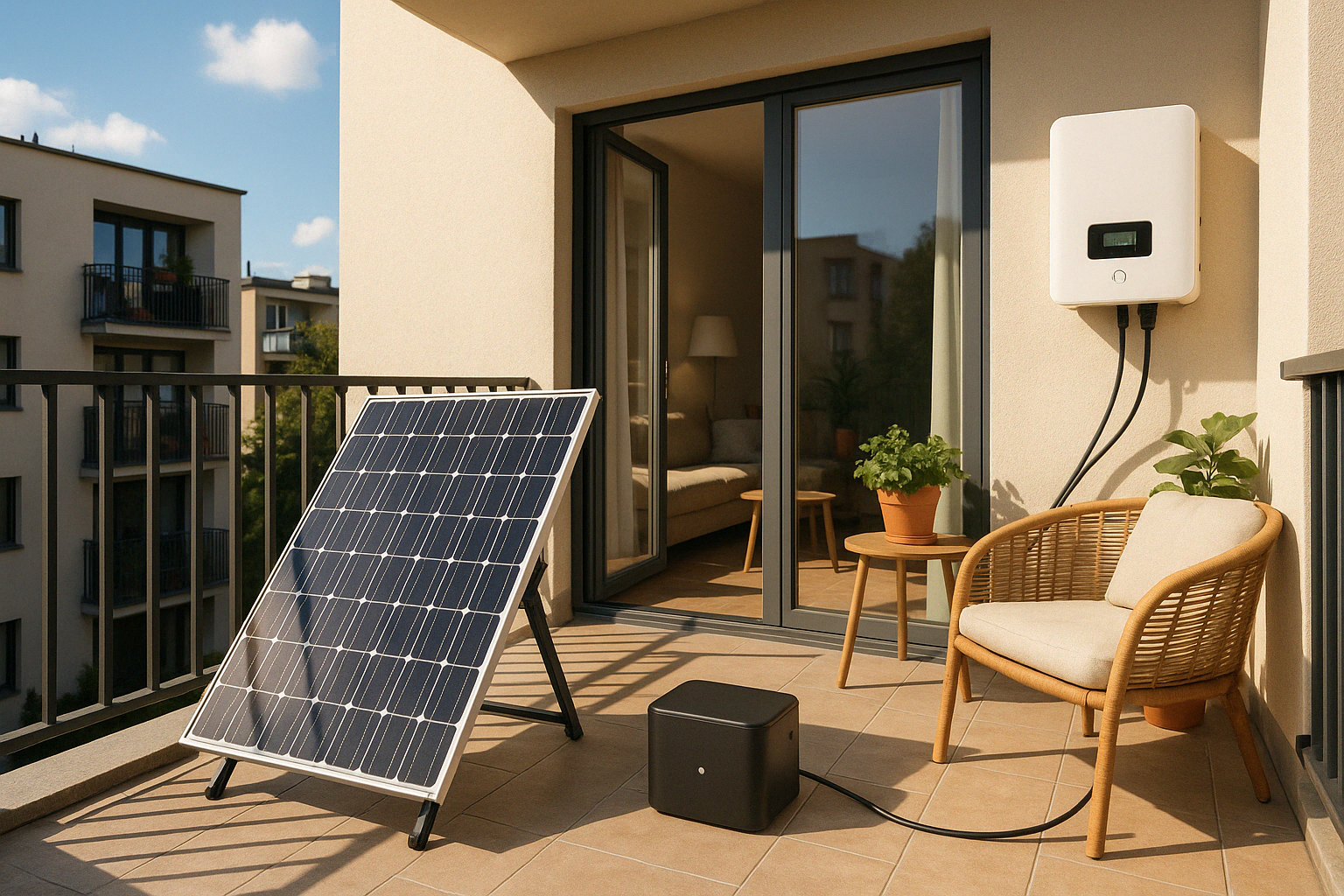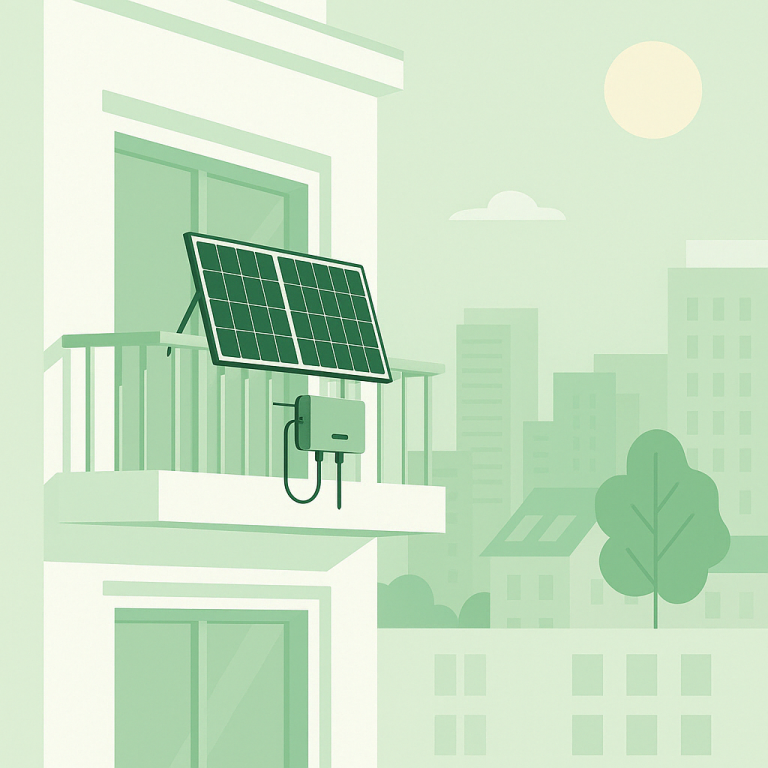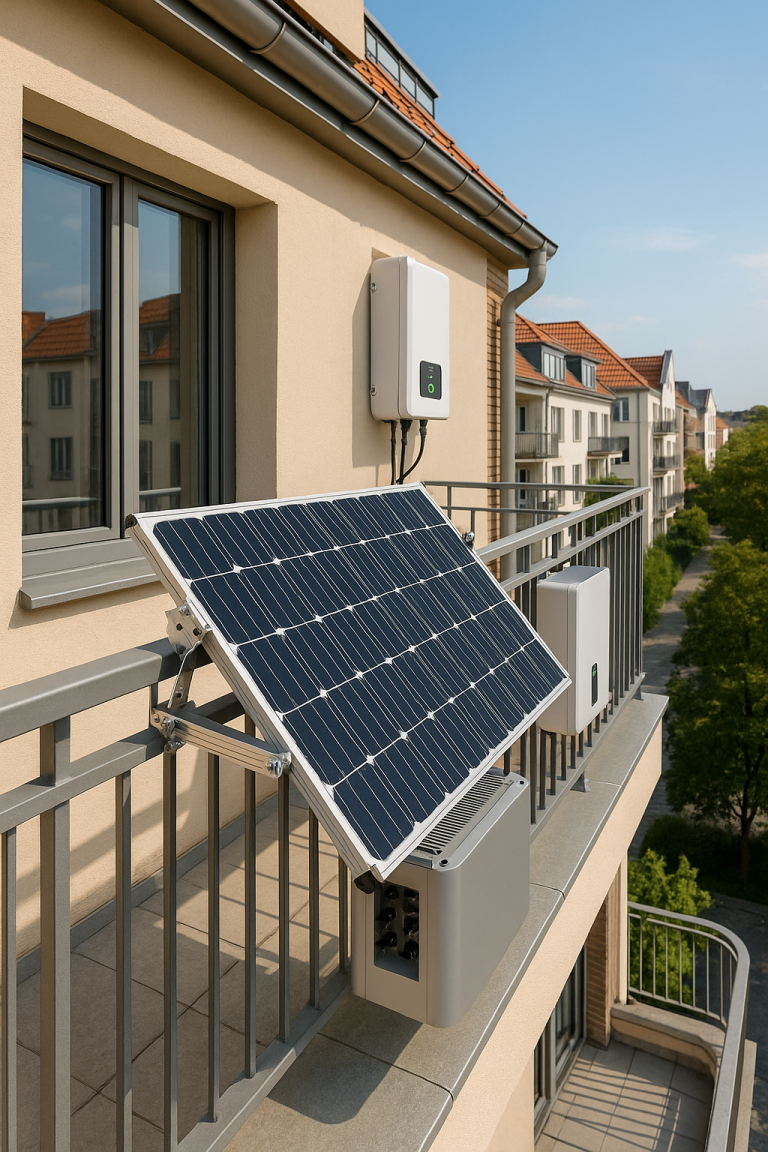1. Introduction
Solar power has traditionally been associated with complex installations, rooftops, permits, and electricians. But that’s changing — fast.
Welcome to the era of plug-and-play solar systems, where solar energy becomes accessible to renters, urban dwellers, and DIY enthusiasts with no tools, no permits, and no professionals needed.
By 2025, plug-and-play solar kits — especially popular in countries like Germany, Austria, the Netherlands, and France — are transforming the way individuals adopt renewable energy. This article explores why these systems are gaining ground, how they work, and whether they really are the future of solar for everyone.
2. What Is a Plug-and-Play Solar System?
A plug-and-play (PnP) solar system is a small-scale photovoltaic setup designed for easy, tool-free installation. It typically includes:
- 1–4 solar panels (300W–800W total)
- Micro inverter or all-in-one inverter
- Optional battery storage
- Cables with standard safety plugs (Schuko, Wieland, etc.)
Users can simply mount the panel on a balcony, garden, flat roof, or wall, plug it into a standard socket, and start generating usable electricity for their home.
The system automatically feeds electricity into the home’s internal circuit, reducing consumption from the grid in real time.
3. Core Components: What’s Inside the Box?
A modern PnP kit generally includes:
- Monocrystalline solar panel(s) High-efficiency, compact design for limited space.
- Micro inverter or integrated inverter Converts DC to AC, includes MPPT, and often connects via Wi-Fi or Bluetooth.
- Safety cable set CE-certified plug, surge protection, and ground fault protection.
- Mounting kit Balcony rail clamps, wall brackets, or angle-adjustable supports.
- Optional LiFePO₄ battery module Some systems now support energy storage for nighttime use.
- App monitoring interface View daily output, savings, and grid interaction in real time.
4. Benefits of Plug-and-Play Systems
Here’s why PnP systems are booming in Europe:
? No Electrician Needed
Most models can be installed and activated in under 30 minutes — just like plugging in a kitchen appliance.
? Affordable
Prices range from €500–€1500, making it one of the cheapest ways to generate solar energy.
? Perfect for Renters & Apartments
No roof access? No problem. These systems mount to balconies, fences, or windowsills.
? Modular & Stackable
Start small (e.g., 600W) and expand later with additional panels or battery modules.
? Real-Time Savings
Every watt produced offsets grid usage instantly — leading to €100–€300 annual savings.
? Smart Monitoring
Most systems come with apps that show energy output, savings, and system health.
5. Limitations and Common Misunderstandings
Despite their advantages, plug-and-play kits are not a one-size-fits-all solution.
⚠️ Not for Whole-Home Backup
With typical capacities under 1kW, they can’t run large appliances or cover your entire home.
⚠️ Limited Impact in High-Usage Homes
They’re best suited for offsetting base load (Wi-Fi, fridge, standby devices), not full demand.
⚠️ Orientation and Shading Matter
Poor placement = poor performance. South-facing or adjustable angles are key.
⚠️ Grid Feed-in Restrictions
Some countries require a registration or limit reverse flow to the grid.
6. Are They Legal? EU Regulations in 2025
Plug-and-play solar systems were once in a grey area — but now, most of Europe has updated laws to accommodate them.
?? Germany :
Legal under VDE-AR-N 4105 with:
- Max 600W (soon 800W)
- MaStR registration required
- Wieland plug strongly recommended, Schuko tolerated
?? France :
Legal up to 3kWp with ENEDIS registration. PnP below 800W usually doesn’t require inspection.
?? Netherlands :
Fully legal. Feed-in supported. Systems under 800W require no permit.
?? Austria :
Legal up to 800W with simplified grid notification.
? Always check your local grid operator’s guidelines before plugging in — especially for insurance compliance.
7. Ideal Use Cases: Apartments, Balconies & More
These are the most common applications for PnP solar:
- Urban Apartments: Balcony rail mount, south-facing, generates power all day.
- Rented Homes: No structural change needed — easily removed when moving out.
- Mobile Homes / Caravans: Lightweight and semi-portable solutions available.
- Small Offices / Garages: Ideal for reducing standby and daylight loads.
- Retailers / B2B: Sell-ready kits attract commercial clients with fast ROI.
8. Cost and Installation Comparison
| System Type | Typical Power | Cost Range (EUR) | Installation Time | Requires Electrician |
| Plug-and-Play | 300W–800W | €500–€1500 | 15–45 min | ❌ |
| Rooftop Solar | 3kW–10kW | €6000–€15,000 | 2–3 days | ✅ |
| Off-grid System | 5kWh–15kWh | €9000–€20,000+ | 3–5 days | ✅ |
? Return on investment for PnP systems is usually within 3–5 years, especially with rising grid prices and smart energy usage.
9. Future Trends: Smart Grids, Battery Integration & Beyond
In 2025 and beyond, expect plug-and-play systems to evolve in key areas:
- Integrated LiFePO₄ battery modules Store excess energy for use at night or during outages.
- Bidirectional power control Smart inverters with limiters to avoid overfeeding the grid.
- Grid-interactive features Communicate with utilities to balance grid loads.
- IoT integration Connect with smart home devices, EV chargers, and energy dashboards.
- Regulatory harmonization EU-wide alignment could standardize plug types, safety rules, and subsidies.
10. Conclusion – Should You Go Plug-and-Play?
If you’re:
- A renter or apartment dweller
- Interested in reducing your electricity bill
- Looking for a low-cost, DIY-friendly solar option
- Not ready to commit to a full rooftop install…
Then plug-and-play solar systems are an ideal entry point.
They may not power your entire home — but they empower individuals to take part in the renewable revolution. As EU policies shift toward decentralization and prosumer energy models, PnP systems are no longer fringe — they’re the future.
So yes — plug-and-play solar is more than a trend. It’s a movement.




